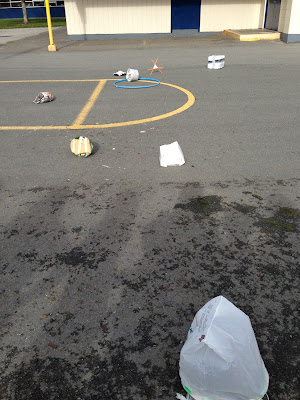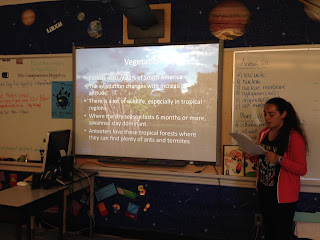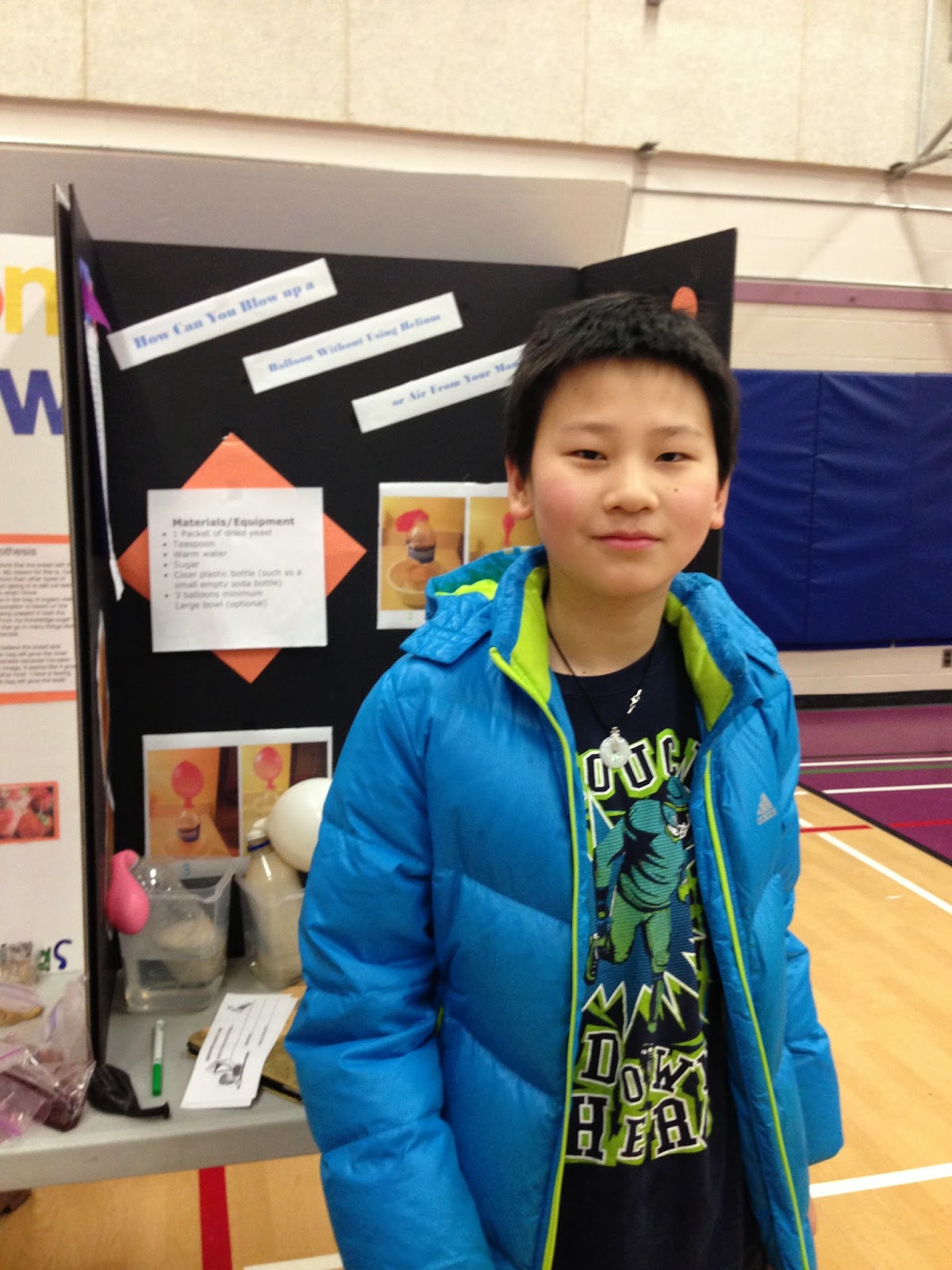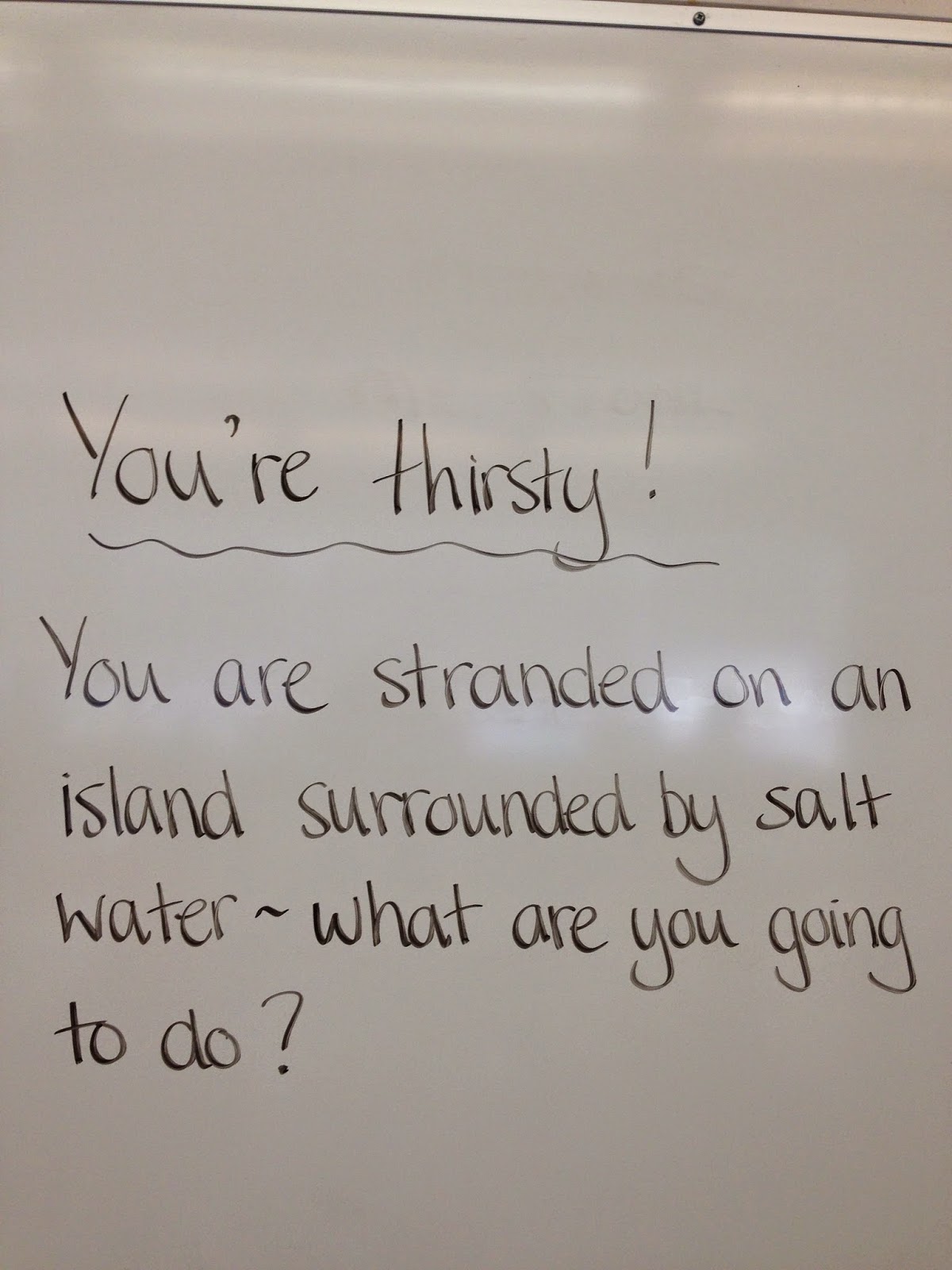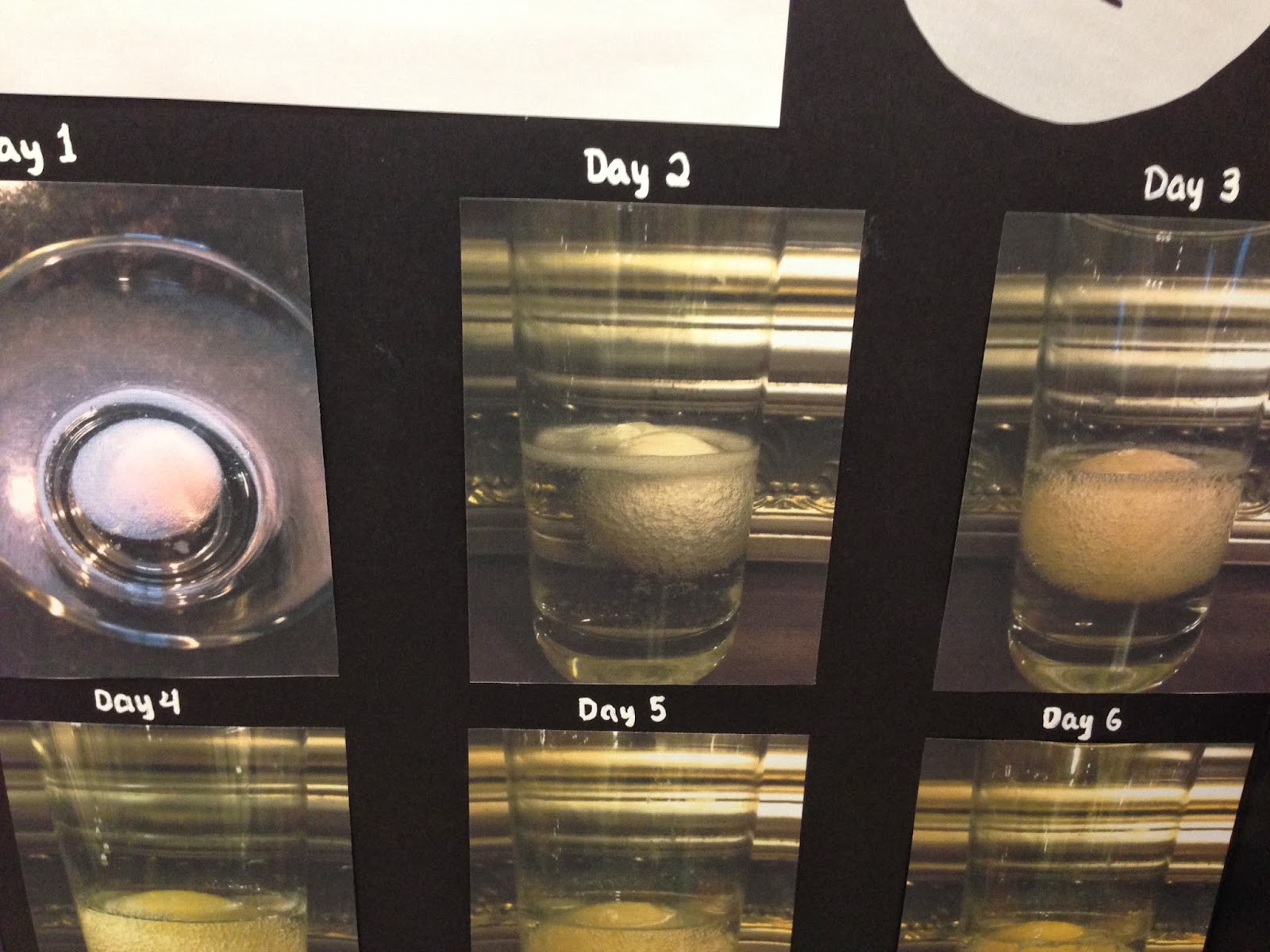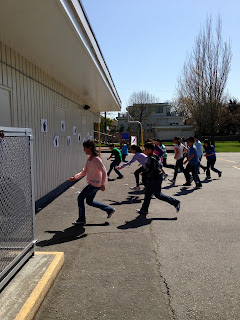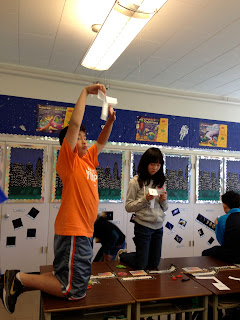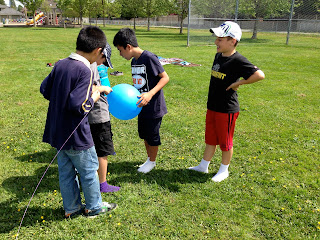Electricity - Term 3 Unit
Building Houses and Incorporating Working Lights, Elevators, Door Alarms, and Jacuzzis into Their Designs (wiring circuits)
We've Started Our Wonderings!
We're Still Working on These 'Wonderings'
"Your Understanding of Earth...Our Understanding of Earth...
Let's Make Changes Together"
Earth Science Posters - In Progress!
Earth Science Lab Presentations
Term One 2015 - 16
This term, we are studying various scientific features associated with the Earth. Our latest class conversations on this subject veered from the formation of glaciers, to the Earth's crust and volcanic eruptions, to the Mars Rover landings and Nasa's Voyager spacecrafts. The students independently researched facts on all the spacecrafts that were 'sent' to Mars, as well as the messages that are encrypted in the gold records on Voyager 1 and 2; which are still exploring interstellar space and travelling beyond the outer limits of the Sun's magnetic field. With these studies, the students became enthusiastic to do a science experiment from years past - 'how to protect an egg from breaking, just like the Mars Rovers.'
We 'simulated' going through space debris, solar winds, gravitational pulls etc. by performing various 'tests' on the eggs (beyond just dropping them), as well as 'targeted landings.' We had several 'surviving' eggs after all the 'missions' were completed (see below!)... and are now back to studying the geological features of Earth.
2014 - 15
We have been studying the diversity of life over the last few months and have investigated the following: classification systems (historically/kingdoms), 'living things,' adaptations, biodiversity, cell comparisons, topography and habitats, to predators/threats and conservation. At present, the students are in the middle of presenting their socials/science projects on the 'Diversity of Life.'
The students had to choose three organisms/'living things' and research and present the following information:
Classification - from kingdom, phyla to species
Evolution and Adaptations (including comparisons between organisms)
Appearance, Cells, Life Cycle, 'Diet' (where applicable), Habitat, Behaviour (where applicable), Predators/Threats (where applicable)
Contributions to Biodiversity and Global Distribution/Habitats (where applicable)
Factors Affecting Distribution/Habitats (topography to climate)
Canadian Connections
Human Interaction/impacts on Environment/Organism
Survival and Conservation
Future Adaptations/Evolution - 1000 years from now (how and why?)
Here are Some Snap Shots from the Presentations
Science Fair February 2015
Properties of Matter Experiments
Problem Solving
Making Snow! (waiting patiently for it to happen!)
It's snowing!
This term, the students are studying chemistry and are currently investigating the various properties of matter using water molecule experiments and games.
____________________________________
2013-14
Errington Science Fair
'Winners'
Website Addresses For Science Fair Projects
www.education.com/science-fair/
www.scienceproject.com/projects/index/intermed.asp (membership required for full info. - good just for initial ideas)
www.scienceproject.com/information/Featured_Projects.asp (membership required for full info. - good just for initial ideas)
www.1000sciencefairprojects.com/
www.all-science-fair-projects.com/
www.sciencebuddies.org/science-fair-projects/
www.sciencekids.co.nz/projects.html
http://sciencefair.math.iit.edu/projects/
www.kidzworld.com/article/1762-school-science-fair-project-examples-and-ideas
www.sciencefairadventure.com/
www.sciencebob.com/sciencefair/ideas.php
www.stevespanglerscience.com/lab/experiments
www.juliantrubin.com/branchesofsciencefair.html
www.usc.edu/CSSF/
www.factmonster.com/cig/science-fair-projects/
www.madsci.org/experiments/
http://parentingteens.about.com/cs/homeworkhelp/a/blscproindex.htm
http://scienceclub.org/scifair.html
http://faculty.washington.edu/chudler/experi.html
www.energyquest.ca.gov/projects/index.html#chemical
Hypothetical Island - Group Power Point Problem
(From Volcanoes: A Comprehensive Hands-on Science Unit by Melinda Story)
The Problem:
The small Caribbean island of Guinus is planning to build a tourist destination "Lava Land" theme park. The island is 10 miles long and is part of a group of islands that includes Grenada, Barbados, Dominica, and Antigua. At one end of the island is a beautiful cone shaped mountain. This is a strato volcano that the natives call Pango-Pango. The mountain is over 25 000 feet high. The capital city of Bimini is located at the base and middle of the mountain. No one living on the island remembers any volcanic activity coming from Pango-Pango, but the builder and the owner of the theme park is worried about volcanic eruptions on nearby islands.
Is it a good idea to build here?
Prepare a PowerPoint presentation that will:
*Describe various types of volcanoes - paying particular attention to the above type
*Give a history of volcanic eruptions in the last 2 centuries, including at least one from the same type of volcano as Pango-Pango
*Give specific examples of volcanic activity in the part of the world near Guinus
*An explanation of why volcanoes erupt near Guinus
*The major dangers and hazards that would be associated with the eruption of a volcano like Pango-Pango
*What signs a volcano might exhibit before an eruption
*What steps should be taken to protect tourists if Pango-Pango started to erupt
Group Power Point Solutions in Progress
(Within each group, students played the roles of 'geologist,' 'photographer' and 'historian.'
Looking at Some Fossils
Earth's Plates
Volcanoes!
"Hmm - our floor's clean now!"
'Gem Hunting!'
"Oh La La!"
Testing For the Presence of Limestone
- - - - - - - - - - - - - - - - - - - - - - - - - - - - - - - - - - - - - - - - - - - - - - - - - - - -
2012-2013 School Year
(Please note that all videos for this year have now been removed)Student Activity - Continuing from our Science Studies at Playland
Visit the following site and play the game "Forces at the Funfare," which will be displayed after the 'girl' appears. Change the dynamics of the roller coaster ride to make it successful. After it is successful, go through and answer all the question 'the man' asks. Once they are completed, the game will allow you to print your "Engineer's Log"- do so, and bring it to school.
___________________________________________________
We've had a very busy term all round with various events happening at our school, but in terms of science - the students have been enjoying doing a plethora of science experiments associated with 'forces" (see below). They are also in the midst of following up a mini research project on simple machines, by transferring their knowledge into movie presentations; using various apps on our school's mini iPads.
What forces did William Tell have to overcome when he had to hit an arrow on top of his son's head - as the legend of William Tell states? Division 3 students read about the legend, and worked out that he would have had to have overcome:
GRAVITY (pushing arrow down)
AIR RESISTANCE (pressure / wind)
DRAG
UNBALANCED FORCES (arms)
FRICTION (string / bow / arrow)
He would have also needed to ensure that the ‘forces’ in his crossbow were BALANCED – just like a hovering helicopter!
Exploring Centripetal Force with Giant Marshmallow Spinners
Exploring Balanced Forces - Paper Helicopters!
Exploring Friction - Home Made Puff Blowers!
Air Resistance / Drag and Testing Newtons 3 Laws of Motion - Balloon Rockets
Term 2
Diversity of Life
We finished off our Diversity of Life Unit looking at human cheek cells (which the students 'scraped' from their own cheeks - much to their disgust!), and are currently growing some mold on bread laden with various solutions including lemon juice (results to follow at the end of April).
Students taking their last look at plant cells (onions) below...
...and their thumbprints!
The students are just nearing the end of their unit on the Diversity of Life and we've had a number of memorable lessons to date (March 4th!). The students started off the term brainstorming how they would categorize and deem 'something' as 'living.'
I placed a number of pictures of different items on the board that they had to classify into living and non-living; which I thought would take the students about one lesson to do. This lesson actually lasted for several classes as the students debated their categories and classifications for a lot longer than expected. Eventually, they came to a consensus, but that was after I threw them for a loop when I explained how Aboriginal Peoples classify things (it confused them a lot to say the least).
Afterwards, we moved on to looking at the 'real' scientific classifications of living things:
Living things are made of cells
Living things exchange gases
Living things use energy
Living things grow
Living things reproduce
Living things respond to stimuli
Then we studied the Five Kingdoms of Living Things: Moneran, Protist, Fungus, Plant, and Animal Kingdoms.
We looked and discussed the differences between vertebrates and invertebrates, the classifications of vertebrates and invertebrates, and now we're taking a closer look at cells (animal vs plant cells). To date, we've looked through microscopes at a number of different things from fabric fibers to dead mosquitoes and onion cells, and are now concentrating on taking a closer look at the features of cells.
Some great websites (and activities) that the students have had a look at include the following:
www.cellsalive.com/cells/cell_model.htm
- Click on ”HowBig?” on the left hand side of the page under “Interactive…”
- “Immunology” under the “Contents…” heading then click on “OUCH!” scroll down & click on “gently…..press…OOOUUUUUCH!”
- “Cell Cams” – “Bacteria and Cancer Cells” (under the “Interactive…” heading) and the splitting of cells at the “Mitosis” section. Do you want to see some dust mites? (Click on “Cell Gallery” then “Allergies and Mites” - yuck!)
www.what2learn.com/animal-and-plant-cells-science-revision-games/
- Drag the labels onto the cells - did you get them correct?
- Cells vocabulary hangman quick play
- Cells anagram game quick play
To support our unit we also had a scientist from "High Tech High Touch" come in to do some experiments on living and non-living things:
Yeast = Living!
DNA!
Renewable and Non-renewable Resources
(oldest to newest)
26th of September
Today, our class started creating 'mind maps' on renewable vs non renewable resources. They spent an hour discussing with their peers the definition of renewable and non renewable resources, and cutting out and placing 'resource pictures' under each of the given categories. They then had to defend their decisions to their peers and other groups - which they did very "enthusiastically" - for a long time!
September / October
Every week, students are learning new facts on resources and are adding new information learnt to various mind maps. To date, they have three draft mind maps in progress. Towards the end of the unit, students will have to put all their draft mind maps together onto one large poster format and then verbally justify their mapping/connections to me.
The start of 'resources' mind maps.
Our field trip to Britannia Mine Museum - mind mapping as a class.
Our second 'mind map draft' on mining and the Britannia Mine Museum.
Learning about the water cycle.
Introducing different types of mining processes (mind map three).
The students worked very well for the rest of the term on all 'resources' activities and produced terrific mind maps and posters on the subject (see below).

















































































































